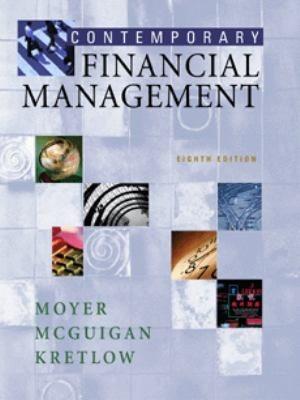Answered step by step
Verified Expert Solution
Question
1 Approved Answer
need the answer as soon as possible, many thanks 1. The CAPM and the APT Consider an economy in which the random return ti on
need the answer as soon as possible, many thanks


1. The CAPM and the APT Consider an economy in which the random return ti on each individual asset i is determined by the market model Ti = E(Fi) + Bi[TM E(Tm)] + Ei, where, as we discussed in class, E(Fi) is the expected return on asset i, im is the return on the market portfolio, B; reflects the covariance between the return on asset i and the return on the market portfolio, and ; is an idiosyncratic, firm-specific component. Assume, as Stephen Ross did when developing the arbitrage pricing theory (APT), that there are enough individual assets for investors to form many well-diversified portfolios and that investors act to eliminate all arbitrage opportunities that may arise across all well-diversified portfolios. a. Write down the equation, implied by the APT, that links the expected return E(Tw) on each well-diversified portfolio to the risk-free rate rs, the expected return Elim) on the market portfolio, and the portfolio's beta Bw. b. Explain briefly (one or two sentences is all that it should take) how the equation you wrote down to answer part (a), above, differs from the capital asset pricing model's (CAPM's) security market line. c. Suppose you find a well-diversified portfolio with beta Bw that has an expected return that is higher than the expected return given in your answer to part (a), above. In that case, you can buy that portfolio, and sell short a portfolio of equal value that allocates the share w to the market portfolio and the remaining share to 1 - w to a risk-free asset. What value of w will make this trading strategy free of risk, self-financing, but profitable for sure? 2. A Two-Factor APT Consider an economy in which the random return i on each individual asset i is given by i = E(fi) + Bim[im E(m)] + Bi,smb[SMB E(smb)] + i where, as we discussed in class, E(i) equals the expected return on asset i, im is the random return on the market portfolio, ismi is the random return on a "small-minus-big" portfolio that takes a long position in shares of stock issued by smaller, overlooked companies and a corresponding short position is shares of stock issued by larger, more popular companies. ; is an idiosyncratic, firm-specific component, and Bim and Bi,sms are the "factor loadings" that measure the extent to which the return on asset i is correlated with the return on the market and "small-minus-big" portfolios. Assume, as Stephen Ross did when developing the arbitrage pricing theory (APT), that there are enough individual assets for investors to form many well-diversified portfolios and that investors act to eliminate all arbitrage opportunities that may arise across all well-diversified portfolios. a. Consider, first, a well-diversified portfolio that has Bw,m = Bw,SMB = 0. Write down the equation, implied by the APT, that links the expected return E(FH) on this portfolio to the return ry on a portfolio of risk-free assets. b. Consider, next, two more well-diversified portfolios. Portfolio two with Bw,m= 1 and Bw.SMB = 0 and portfolio three with Bw,m= 0 and Bw.SMB = 1. Write down the equations, implied by this version of the APT, that link the expected returns E(73) and E(73) on each of these two portfolios to E(im), and Effsmb). c. Suppose you find a fourth well-diversified portfolio that has non-zero values of both Bw,m and Bw.sms and that has expected return E (7) = rf + Bw.m[E (M) rs]+Bw,smBE(sMB) +A where A
Step by Step Solution
There are 3 Steps involved in it
Step: 1

Get Instant Access to Expert-Tailored Solutions
See step-by-step solutions with expert insights and AI powered tools for academic success
Step: 2

Step: 3

Ace Your Homework with AI
Get the answers you need in no time with our AI-driven, step-by-step assistance
Get Started


